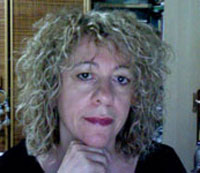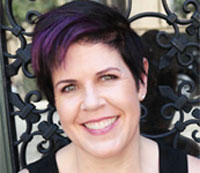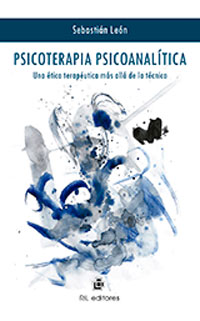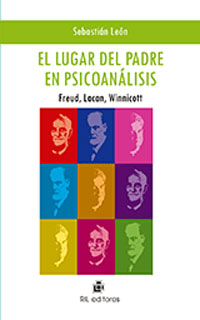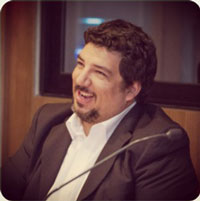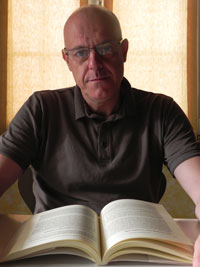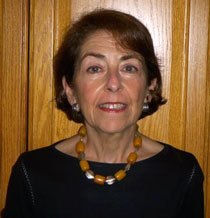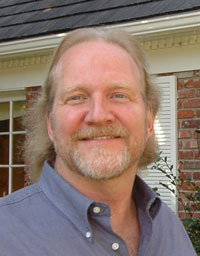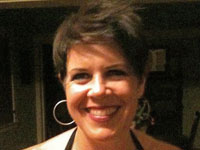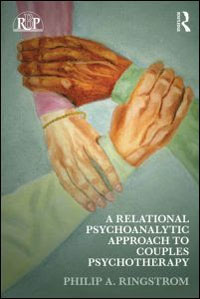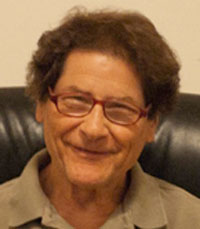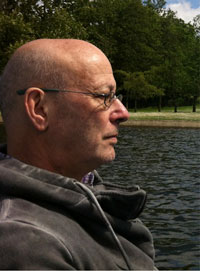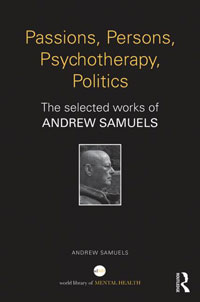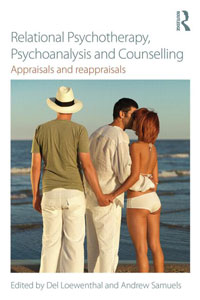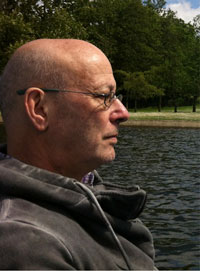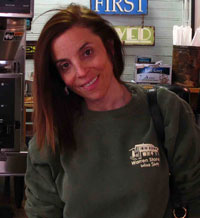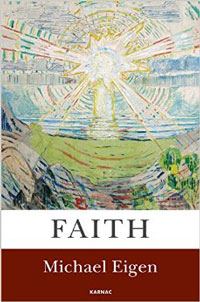Interview by Sharon Ziv Beiman
In his new book Paul Wachtel offers the reader an updated, comprehensive, and highly illuminating version of his groundbreaking relational‑integrative theory, Cyclical Psychodynamics (1977, 1987, 1997, 2008, 2011). Wachtel reviews and renews the core ideas his theory suggests. According to Wachtel’s Cyclical Psychodynamic theory, the psychodynamic infrastructure, the behavioral world, and the social and relational world cyclically and reciprocally influence each other. He argues that the experiential world we live in is created jointly by the way our psychodynamic infrastructure shapes our perceptions and actions in the world and by the responses from others that those actions evoke. Therefore, interventions on each of these dimensions—psychodynamic interpretative work, behavioral environmental change, or new experiences in the relational world—have the potential to cyclically influence other dimensions as well. Psychotherapeutic integration, according to this theory, means combining the work on insight and action, while mapping the cyclical and reciprocal influences among the different dimensions, trying to promote change in the most accessible channel, and detecting its cyclical influence on other channels as well.
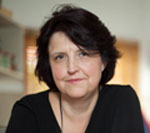
Sharon Ziv Beiman: Paul, I would like to share with you that reading your book deepened the formative influence of your theoretical ideas on my clinical theory and practice. In addition, I experienced your writing as offering an outstanding demonstration of your intellectual challenging of the binaries between depth and action and between depth and clarity.
First, I would like to ask you what are the major developments in your theory “Cyclical Psychodynamics” that the new book delivers?
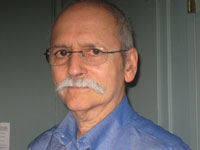 Paul Wachtel: Let me begin with expressing my gratitude both for your kind comments and for doing this interview.
Paul Wachtel: Let me begin with expressing my gratitude both for your kind comments and for doing this interview.
Regarding what is new in the book, perhaps the most important thing is that it is the first book I have written that places cyclical psychodynamic theory so front and center. The theory described in the book has been at the heart of my thinking for many years, but it was usually the background context for my discussions of topics such as integrating other modalities into psychoanalysis, how to formulate our comments to patients so that they are genuinely therapeutic instead of subtly undermining or threatening, and the reexamination of the relational paradigm and its implications for therapeutic practice. Here, however, cyclical psychodynamic theory is not the background but the foreground.
The book also aims to further elaborate and explore a range of issues that I have discussed before but in venues that were not usually familiar to analysts. Thus it elaborates on the concept of “accomplices” in maintaining problematic patterns in living. This is a concept that has been at the heart of my work for many years and that, I believe, is a crucial one for relational psychoanalytic thinking, but the explicit concept of “accomplices” has not been part of the psychoanalytic vocabulary thus far.
The book explores as well other ideas and issues that had not been examined as fully in my earlier books. Examples include a perspective on the relation between repression and dissociation, offering new ways of thinking about both and about the unconscious; a cyclical psychodynamic perspective on attachment highlighting the differences between one-person and two-person approaches to conceptualizing what attachment is, as well as what its implications are for theory and practice; a reexamination of the ways the metaphor of depth is employed in psychoanalytic discourse, and the potential confusions it can introduce; and further elaboration of the relation between what is usually called the inner world and the outer world. I also include a number of case studies that I hope further our understanding of the range of potentials inherent in the psychoanalytic point of view. These cases demonstrate that opening ourselves to thinking integratively in our practice enables us to carry our psychoanalytic aims further than if we limit our applications of psychoanalytic thought strictly to what we have called “psychoanalysis.” In fact, the book even contains a chapter that raises the question of whether psychoanalytic training should be understood as training to be a psychoanalyst.
The term “relational” is connected for many of us to concepts such as “multiple self,” “mutual recognition,” “self states,” “co‑construction,” “enactments,” “thirdness,” “intersubjective space,” “culture in mind,” “intersubjective negotiation,” and “witnessing,” to mention just a few. My impression is that you use the term “relational” with different emphases or connotations. Can you reflect on this observation?
I am very interested in, and address in some way, almost all of the concepts you just named. But you are right that I often view them in a somewhat different way and offer a version of relational theory that has a different tone, style, and conception of where the boundaries around relational thinking should be drawn.
The cyclical psychodynamic version of relational thought evolved out of an effort to integrate psychoanalytic ideas and practices with those of other therapeutic approaches, and so it is a more open-systems understanding of both psychoanalysis and its evolving relational tradition. Most relational formulations originated out of a more limited (though certainly very fertile and important) integrative aim, to integrate interpersonal, object relations, and self psychology perspectives, although it did later integrate more broadly, including perspectives from feminist thought, dynamic systems theory, attachment theory, and other points of view.
I still recall vividly conversations I had with Steve Mitchell in which Steve expressed sympathy for the aim of integrating ideas and methods from other therapeutic perspectives outside of psychoanalysis, but said it was a sufficient challenge to aim for integration within the realm of psychoanalytic views. I certainly resonate with that acknowledgment of the finiteness of all of us, but feel that relational thinking is enriched by going outside as well. There is a lot in the world of cognitive behavioral practice that I feel quite critical about, and I have actually written quite explicit critiques of a number of features of CBT, but I also think that to just thoroughly ignore what is now the point of view of the large majority of therapists in the world is a mistake. We have much to object to in what they do, but we also have things to learn. Steve, as a pioneer, understandably had to limit his scope of attention in order to accomplish what he did, but I wish that more contemporary relationalists, building on the foundation that Steve and other early pioneers created, were turning their attention outward to see what we could learn from therapists whose views and vocabularies are quite different from ours.
It is interesting to note, in this regard, that for several years Steve was on the advisory board of SEPI, the Society for the Exploration of Psychotherapy Integration. Eventually, he conveyed to me that he needed to narrow his focus to pursue his within-psychoanalysis integrative efforts, but I like to think that, having accomplished so much of his ambitious agenda by the time of his death, he would have rejoined SEPI had his life not been so tragically cut short.
Just to add one other dimension to my response to your important question, in an earlier book, Relational Theory and the Practice of Psychotherapy, I discussed in great detail what I call “the default position,” a set of unexamined assumptions about psychoanalytic practice inherited from the early and middle years of psychoanalytic history. I examined there the ways in which relational practice can often unwittingly continue to incorporate “default position” restrictions and, relatedly, how the two-person emphasis in relational epistemology is often not accompanied by a fully two-person perspective in many relational accounts of personality dynamics and development. The cyclical psychodynamic version of relational thought aims to be more thoroughly two-person in its perspective.
Your theory has always related to the interaction between the psychodynamic inner infrastructure, the relational world, and the behavioral world. In the current book you emphasize the “contextual self.” Can you share with us what led you to conceptualize and emphasize the “contextual self” and how this concept differs from your earlier perception of the “relational self”?
I just referred to being more thoroughly two-person, and now I need immediately to challenge myself. One hallmark of the cyclical psychodynamic point of view is an effort to go beyond “two-person” thinking to arrive at a more thoroughly contextual point of view. I still use the language of one-person and two-person, because it is a part of our discourse, and clarifies certain distinctions. But it can obscure other issues. The highlighting of the concept of “two-person” psychology largely originates in the circumstances in which most psychoanalysts do their thinking and observing—two people in a room. But family therapists or group therapists work with more than two people in the room, and, more importantly, we all live in a variety of contexts that include not just more than two people but other sources of influence altogether. Part of the aim of this new book is to bring together ideas deriving from the clinical situation and ideas that address the larger realm of society (hence the long subtitle of the book). Issues of race, culture, ethnicity, economic deprivation, and inequality of opportunity—these are not just “superficial” add-ons to a “deeper” and more fundamental intrapsychic wellspring. The inner world, the intimate world (that is, the world of direct interaction with one or several people in immediate contact and exchange) and the world of culture and society are not really separate realms. They are thorough and reciprocally interwoven to the degree that we do not understand any of them without a good deal of understanding of the others. Indeed, it is only the linear constraints of our language that even render one element of this interwoven whole as separate or “other.”
The concept of the contextual self is an effort to come to grips with this reality of human life and existence. The idea of the contextual self is a way of highlighting that yes, we all do have personality structures, even (though we must be careful of the metaphor, as I noted earlier) deep-seated personality structures. But they are also contextual structures. What is characteristic of each of us is our distinct way of experiencing and responding to different situations or relational contexts. We each make sense of and respond to the circumstances we encounter in our unique, individual fashion. (I should add here that the situations we encounter are not just externally or randomly determined; the dialectic between finding ourselves in situations determined by others and creating the situations we find ourselves in through the way we have related to and perceived the other is a central emphasis of cyclical psychodynamic thought.) But at the same time, each of us is different in different situations. That is what makes the structures of our personality contextual structures. The concept is related to the more familiar relational concept of multiple self states, but it highlights the degree to which those different self states are manifested in relational to different contexts.
What is your perception of the interaction among active interventions, psychic structure, and the analysis of transference?
For many years, analysts were cautioned against any kinds of active interventions because they would “muddy” the transference. This is a key part of what I referred to as the default position (even though most relationalists do challenge this particular manifestation of it). The assumption essentially was that there was one “true” transference. Attention to the contextual nature of the self highlights that there are many transferences. We react transferentially with a different aspect of our complex personality structure depending on what is called forth from the interactive field. This is the core of the two-person point of view. The analyst can’t not be there, can’t factor herself out. She must take into account her impact on the transference facet she elicits. If she acts in a neutral, non-interventive fashion (at least overtly non-interventive, because again it is impossible not to intervene), she calls forth one face of the potential range of transferential reactions. If she is more overtly and manifestly offering advice, guidance, caring, whatever, she will call forth another. No matter what, she will elicit only a portion of the potential range of transferential reactions and experiences, and no matter what, that portion will be a real, if partial, expression of who the person is.
What is your main thesis regarding the issue of psychological and psychoanalytic depth?
I do use the term depth in my writing, just as almost all analysts do, but I use it more self-consciously and with some awareness of irony and limitations. It is an evocative metaphor. The problem is that “deep” is often confused with “early.” One can talk about material related to the patient’s earliest years in a very superficial fashion and one can talk about the struggles and conflicts being manifested in the present in a very deep way. Deep has more to do with how significant something is, how complexly and importantly it is intertwined with the range of issues and experiences the person struggles with, and how hard it is to promote conscious awareness of the desire or experience. Used this way, I have no problem with the concept of depth. But in the chapter on depth in the new book, I try to highlight how often it ends up being confused with “early,” how it is often intertwined with the archaeological metaphor that so much of Freud’s theorizing employed, and where and when it leads us astray.
How do you evaluate the contribution of the relational approach to the development of the movement of psychotherapy integration, and what is your estimation of the potential collaboration between the these two emerging and promising movements in the world of psychotherapy?
Relational psychoanalysis is, in my view, the version of psychoanalysis that best lends itself to incorporating the insights and methods of therapeutic approaches outside of psychoanalysis, thereby expanding and strengthening psychoanalysis itself. (I of course include in this the particular version of relational theorizing that is cyclical psychodynamics, which was originally developed for precisely this purpose.) As I mentioned earlier, I think this potential in relational theory has not been sufficiently exercised so far, but there are increasing trends in this direction. An important book edited by Jill Bresler and Karen Starr on relational psychoanalysis and psychotherapy integration will be coming out at the end of this year, and I think it may help to accelerate the integrative trend that it represents in its very occurrence.
As innovator in field of psychotherapy, what are the next ideas you are working on?
First, thank you for describing my work that way. My aim is to view developments in a range of fields with both skepticism and respect and to see where they fit and, especially, where one provides a strength in the very place where the other is weak.
I have two projects in mind at the moment. One is a reexamination of the concept of evidence-based practice which has had such growing influence in recent years. I think one of the things I am good at is looking at where rhetoric and unexamined ideological assumptions are confused with science or with careful analysis. I think this has happened a lot with the idea of evidence-based practice. I am someone who does think it is incumbent upon us to provide more evidence for the value of what we do. I don’t dismiss that as simply the imposition of a dehumanized technical rationality.
But at the same time, the state of the discourse on evidence-based practice right now is egregious. It is steeped in unexamined (and, I think, often wrong) assumptions, most of them rooted in a melding of one form (the “bad” kind, not the only kind) of cognitive-behavioral thinking and the ideology and economic interests of large corporations. It is dismissive of psychoanalysis and totally misunderstands and misrepresents what psychoanalysis is and, indeed, the vast evidence—of a wide variety of sorts—for its value. It perpetrates a narrow, pinched, and ultimately unscientific view of data. I say unscientific because it is largely rooted in throwing out observations it doesn’t like, like huge numbers of process-outcome studies illuminating what yields change in more naturalistic therapeutic settings (for example, clinics and practitioners who treat people rather than diagnoses). Even its fetish with randomized controlled trials (in no way a “gold standard” when the fundamental requirement of a double blind methodology used in drug studies is not—and cannot be—employed) stops at the shores of findings it does not like. Randomized controlled trials that clearly indicate (within the limits of any single methodology) the value of psychodynamic treatments are dismissed, thrown out, if the therapy wasn’t manualized or if, God forbid, the patients did not all have the same DSM diagnosis. This isn’t science; it’s a travesty of science, and I am planning to write about it in some depth.
The second major project I have in mind is related to Part II of the book, the extension of psychoanalytic understanding into the realms of race, class, and culture. I am especially concerned about two things in the contemporary world, growing inequality and climate change. I would like to probe the roots of these phenomena, which reflect the intersection of psychology, psychoanalysis, economics, sociology, and politics. Not a small project! So I will have to see how to pace myself and what it is realistic to expect.
Since I’m someone who loves to spend time with my family and friends, has a compulsion to see all the interesting new movies, and is utterly preoccupied with the Brooklyn Nets NBA basketball team (no analysis please!), this will obviously be a major juggling effort. But even though I am physically a klutz, I do have some experience in this kind of juggling, so I am optimistic I can accomplish at least part of what I have in mind.
The books of Paul Wachtel:
Wachtel, P. L. (1977). Psychoanalysis and behavior therapy: Toward an integration. New York: Basic Books.
German translation, Stuttgart: Klett-Cotta, 1981.
Paperback edition, Basic Books, 1989.
Wachtel, P. L. (Ed.) (1982). Resistance: Psychodynamic and behavioral approaches. New York: Plenum.
Wachtel, P. L. (1983). The poverty of affluence: A psychological portrait of the American way of life. New York: Free Press.
Japanese translation, Tokyo: Brittania Books, 1985.
Spanish translation, Mexico City: Fondo de Cultura Economico, 1989.
Paperback edition, Philadelphia: New Society Publishers, 1989.
Wachtel, E. F. and Wachtel, P. L. (1986). Family dynamics in individual psychotherapy. New York: Guilford.
Paperback edition, Guilford, 1991.
Wachtel, P. L. (1987). Action and insight. New York: Guilford.
Freedheim, D., Freudenberger, H., Kessler, J., Messer, S., Peterson, D., Strupp, H., & Wachtel, P. (Eds.) (1992). History of psychotherapy: A century of change. Washington, DC: American Psychological Association.
Wachtel, P. L. (1993). Therapeutic communication: Principles and effective practice. New York:Guilford.
Spanish translation, Bilbao, Spain: Desclee de Brouwer, 1996.
Paperback edition, New York: Guilford, 1998.
Italian translation, Torino, Italy: Bollati Boringhieri, 2000.
Japanese translation, Tokyo: Kongo-Shuppan, 2004.
Greek translation, Athens: Savalas, 2005.
Farsi translation. Tehran: University of Tehran Press, 2010.
Wachtel, P. L. (1997). Psychoanalysis, behavior therapy, and the relational world. Washington, DC: American Psychological Association.
Japanese translation, Tokyo: Kongo-Shuppan, 2002.
Farsi translation, Tehran: Arjmand Publications. 2011.
Wachtel, P. L. and Messer, S. M. (Eds.) (1997). Theories of psychotherapy: Issues and prospects. Washington, DC: American Psychological Association.
Wachtel, P. L. (1999). Race in the mind of America: Breaking the vicious circle between blacks and whites. New York: Routledge.
Wachtel, P. L. (2008). Relational theory and the practice of psychotherapy. New York:
Guilford.
Paperback edition, 2010
Turkish translation, 2011. Istanbul: Litera Publishers.
Polish translation, 2014. Warsaw: Wydawnictwo Harmonia
Japanese translation in preparation
Wachtel, P. L. (2011). Inside the session: What really happens in psychotherapy? Washington, DC: American Psychological Association.
Japanese translation in preparation
Wachtel, P. L. (2011). Therapeutic communication: Knowing what to say when. Second Edition. New York: Guilford.
Polish translation, Krakow: Jagiellonian University Press, 2012
Paperback edition, 2013
Japanese translation, 2014, Tokyo: Kongo Shuppan
Wachtel, P. L. (2014). Cyclical psychodynamics and the contextual self: The inner world, the intimate world, and the world of culture and society. New York: Routledge.
Link: http://www.routledge.com/books/details/9780415713955/
Note: 20% discount when ordering online and using code IRK71
Paul L. Wachtel, Ph.D. is Distinguished Professor of psychology in the Colin Powell School for Civic and Global Leadership and in the doctoral program in clinical psychology at City College and the CUNY Graduate Center. He did his undergraduate studies at Columbia and received his doctorate in clinical psychology at Yale. He was a cofounder of the Society for the Exploration of Psychotherapy Integration (SEPI) and is a past president of that organization. Among his books are The Poverty of Affluence (1983); Family Dynamics in Individual Psychotherapy (with Ellen F. Wachtel) (1986); Action and Insight (1987); Psychoanalysis, Behavior Therapy, and the Relational World (1997); and Race in the Mind of America: Breaking the Vicious Circles Between Blacks and Whites (1999). His most recent books are Relational Theory and the Practice of Psychotherapy (2008), Inside the Session: What Really Happens in Psychotherapy (2011) the second edition of Therapeutic Communication (2011), and Cyclical Psychodynamics and the Contextual Self: The Inner World, the Intimate World, and the World of Culture and Society (2014). He is a Fellow of Divisions 12, 29, and 39 of the American Psychological Association and was the winner of the 2010 Hans H. Strupp Award for Psychoanalytic Writing, Teaching, and Research, the 2012 Distinguished Psychologist Award by Division 29 (Psychotherapy) of APA and the 2013 Scholarship and Research Award by Division 39 (Psychoanalysis) of APA.
Paul L. Wachtel, Ph.D.
CUNY Distinguished Professor
Doctoral Program in Clinical Psychology
City College of New York
New York, NY 10031
email Paul Wachtel
Sharon Ziv Beiman, PhD, is a clinical psychologist, the chair of the Israeli Forum for Relational Psychoanalysis and Psychotherapy (the Israeli chapter of IARPP), the co-manager of Siach-Group (an Institute for Relational Psychotherapy Tel Aviv), on faculty at the College for Academic Studies Or Yehuda, and in private practice Tel Aviv.
email Sharon Ziv Beiman

